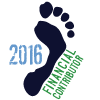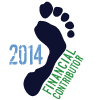Hello Docs, just need your advice on a recurent Ankle Pain.
Background:
I have low arch since my childhood. I started my transition 10 months ago. I'm able now to run 1 hour (10k) barefoot without calf pain during and after. I first made my transition with 0 drop shoes, but experienced pain on top of ankle malleolus after an interval training (this was a tendinitis or inflammation of tibial post tendon sheath). I had 8 chiro sessions with 4 radial schock waves sessions and recovered in 2 months. I changed my transition strategy and began to run barefoot thinking it was a smoother transition as my feet would tell me when it was time to end. I follow ken bob advice to have a light stride and bend my knees.
Unfortunally, the same pain came again 2 months after. It's not a hard pain, but it's disturbing during running and after
Questions:
Does these TP tendon pain is linked to TP muscle stiffness or due to a weakness of TP muscle (low arch since childhood)?
How can istrengthen my TP chain and continue running without shod+orthesis ?
What is the best way to pass through this tendinitis and continue barefoot running when we have low arch?
Thanks.
Background:
I have low arch since my childhood. I started my transition 10 months ago. I'm able now to run 1 hour (10k) barefoot without calf pain during and after. I first made my transition with 0 drop shoes, but experienced pain on top of ankle malleolus after an interval training (this was a tendinitis or inflammation of tibial post tendon sheath). I had 8 chiro sessions with 4 radial schock waves sessions and recovered in 2 months. I changed my transition strategy and began to run barefoot thinking it was a smoother transition as my feet would tell me when it was time to end. I follow ken bob advice to have a light stride and bend my knees.
Unfortunally, the same pain came again 2 months after. It's not a hard pain, but it's disturbing during running and after
Questions:
Does these TP tendon pain is linked to TP muscle stiffness or due to a weakness of TP muscle (low arch since childhood)?
How can istrengthen my TP chain and continue running without shod+orthesis ?
What is the best way to pass through this tendinitis and continue barefoot running when we have low arch?
Thanks.



 forum, I must admit, and the doc did respond with his recommendations. What you do with the info is up to you, but if you want to run and live a barefoot lifestyle, then perhaps after you have overcome injury through the doc's advice or other medical people's advice, try ridding yourself of the orthotics and big comfy shoes slowly, while exercising your feet and your legs (there are a lot of good suggestions for the types of exercises to do) to prepare you for running barefoot, and walk barefoot as much as possible.
forum, I must admit, and the doc did respond with his recommendations. What you do with the info is up to you, but if you want to run and live a barefoot lifestyle, then perhaps after you have overcome injury through the doc's advice or other medical people's advice, try ridding yourself of the orthotics and big comfy shoes slowly, while exercising your feet and your legs (there are a lot of good suggestions for the types of exercises to do) to prepare you for running barefoot, and walk barefoot as much as possible.









